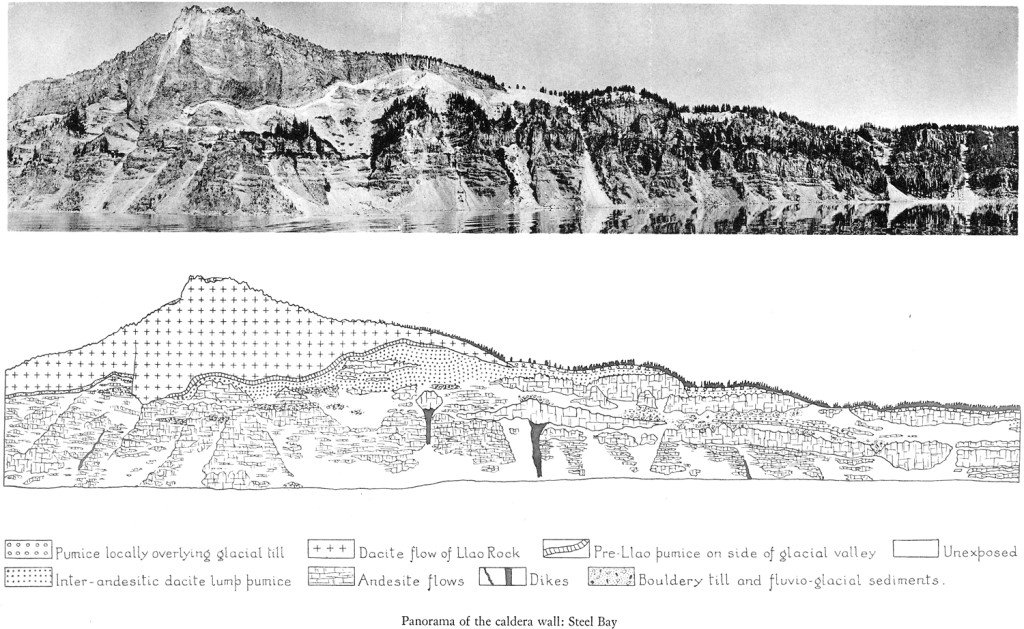The next important exposures of inter-andesitic pumice may be seen in the upper part of Pumice Point, where they form a bold, white face (plate 11, figure 1). The lower half of the point consists of andesitic flows and breccias. Resting on the glaciated crust of the topmost lava is a thin and irregular lens of bouldery till and glacial sand. Above this is 47 feet of coarse lump pumice mixed with large blocks of andesite. After these ejecta had been laid down, they were partly buried by a thick flow of andesite. Both the lava and the pumice were then overridden by ice and a second layer of glacial till was deposited. The ice subsequently retreated, and a dark soil bearing plentiful remains of decayed vegetation accumulated on the moraines. Renewed explosions of dacite pumice then took place, probably from vents at or near the summit of Mount Mazama. These continued until between 130 and 170 feet of ejecta buried the old soil (figure 8). There must have been many explosions of varying intensity, for the deposits are well bedded and differ markedly in coarseness. In some layers the pumice bombs rarely exceed a few inches in diameter; in others they measure a yard across and have pink crusts produced by oxidation of escaping gases. In the finer layers, the fragments of foreign andesite are also small; in the coarser layers, some blocks reach a diameter of 2 feet and they may make up more than a tenth of the whole. Perhaps the rate of deposition and the temperature of the ejecta also varied from time to time, for whereas most of the pumice is white or pale buff and only loosely compacted, certain bands are pink and sufficiently compacted to form small cliffs, as if the ejecta had been hotter, richer in gas, and more rapidly erupted.
Inter-andesitic dacite pumice is again exposed in the upper part of the walls overlooking Steel Bay, where it alternates with lenses of till and flows of andesite (plate 28). Because most of it is concealed by talus and much is difficult of access, the relations have not been determined with the desirable accuracy.
The alternation of andesitic lava with dacite pumice is nowhere more graphically shown than on the caldera walls beneath the east “wing” of Llao Rock (plate 28). Three or four slaggy, red-crusted wedges of andesite may be seen here within a mass of stratified pumice carrying abundant and large blocks of andesite. The maximum thickness of the pumice approximates 300 feet. Above this deposit, and separating it from the dacite flow of Llao Rock, is another stratum of pumice, between 20 and 50 feet thick.
Plate 28. Panorama of the caldera wall: Steel Bay


